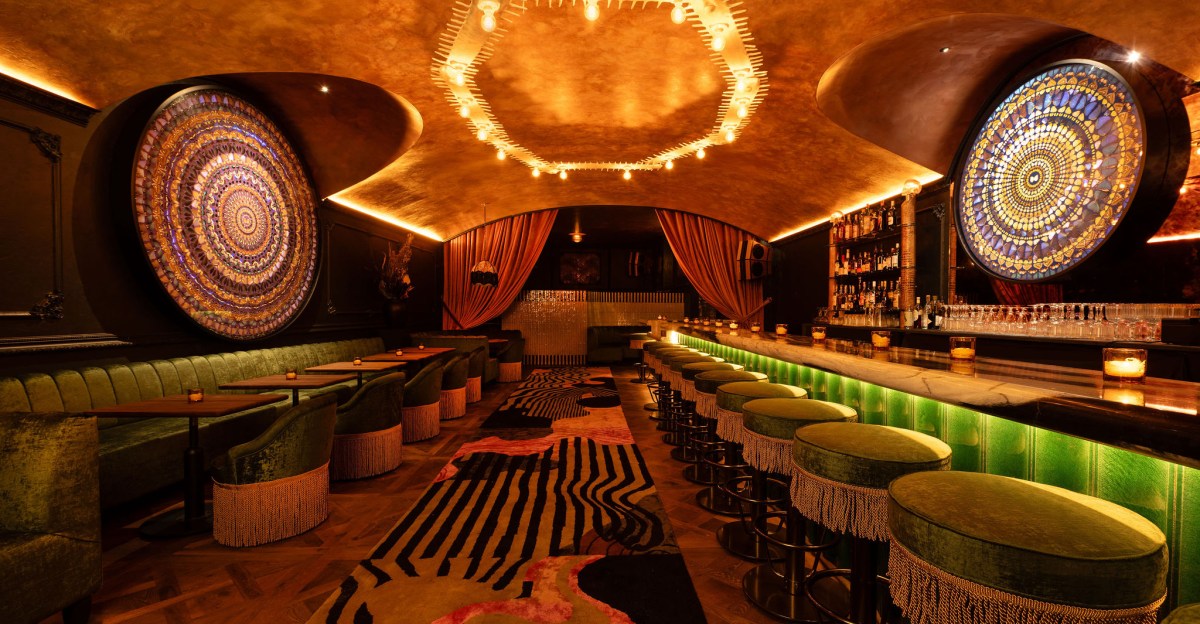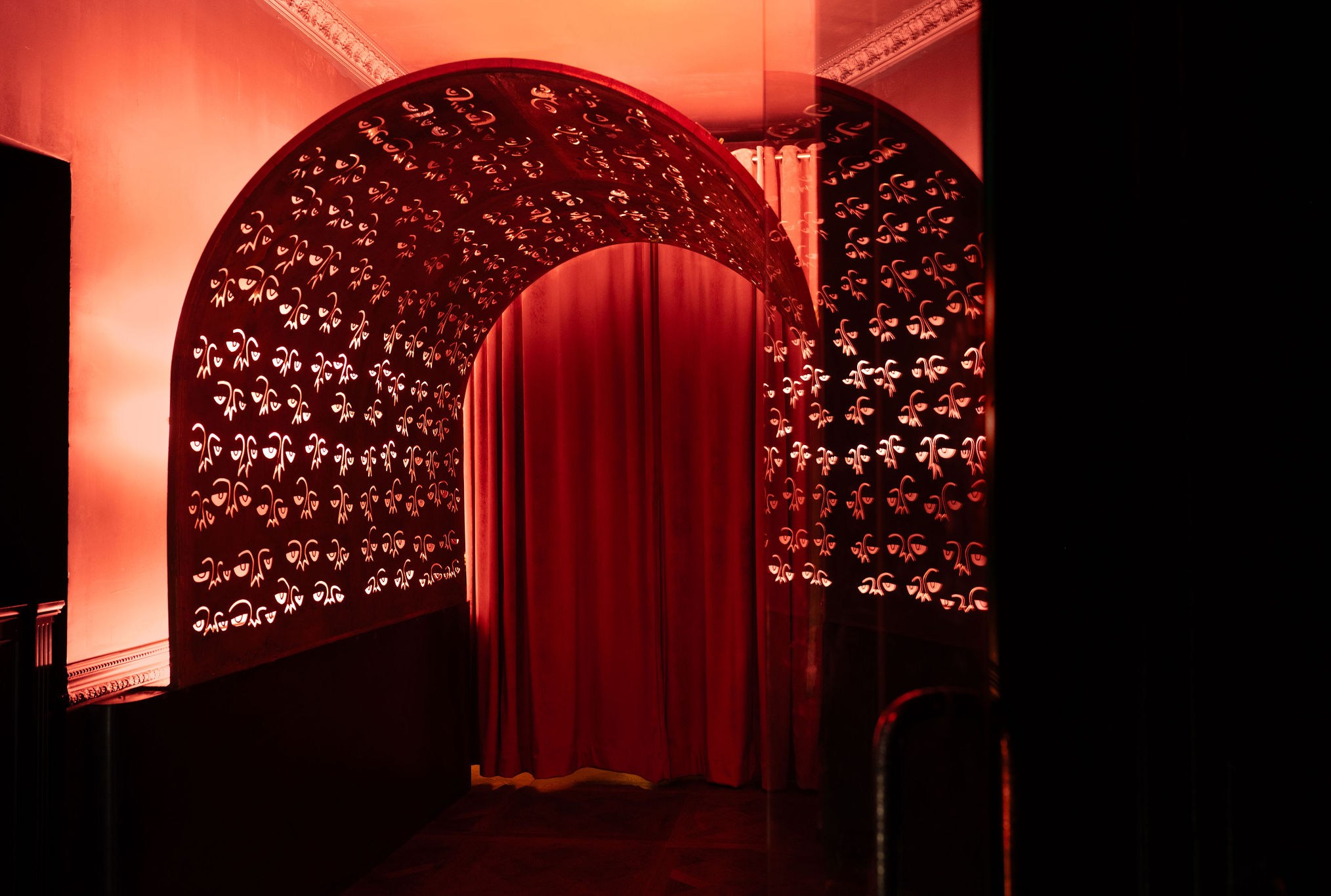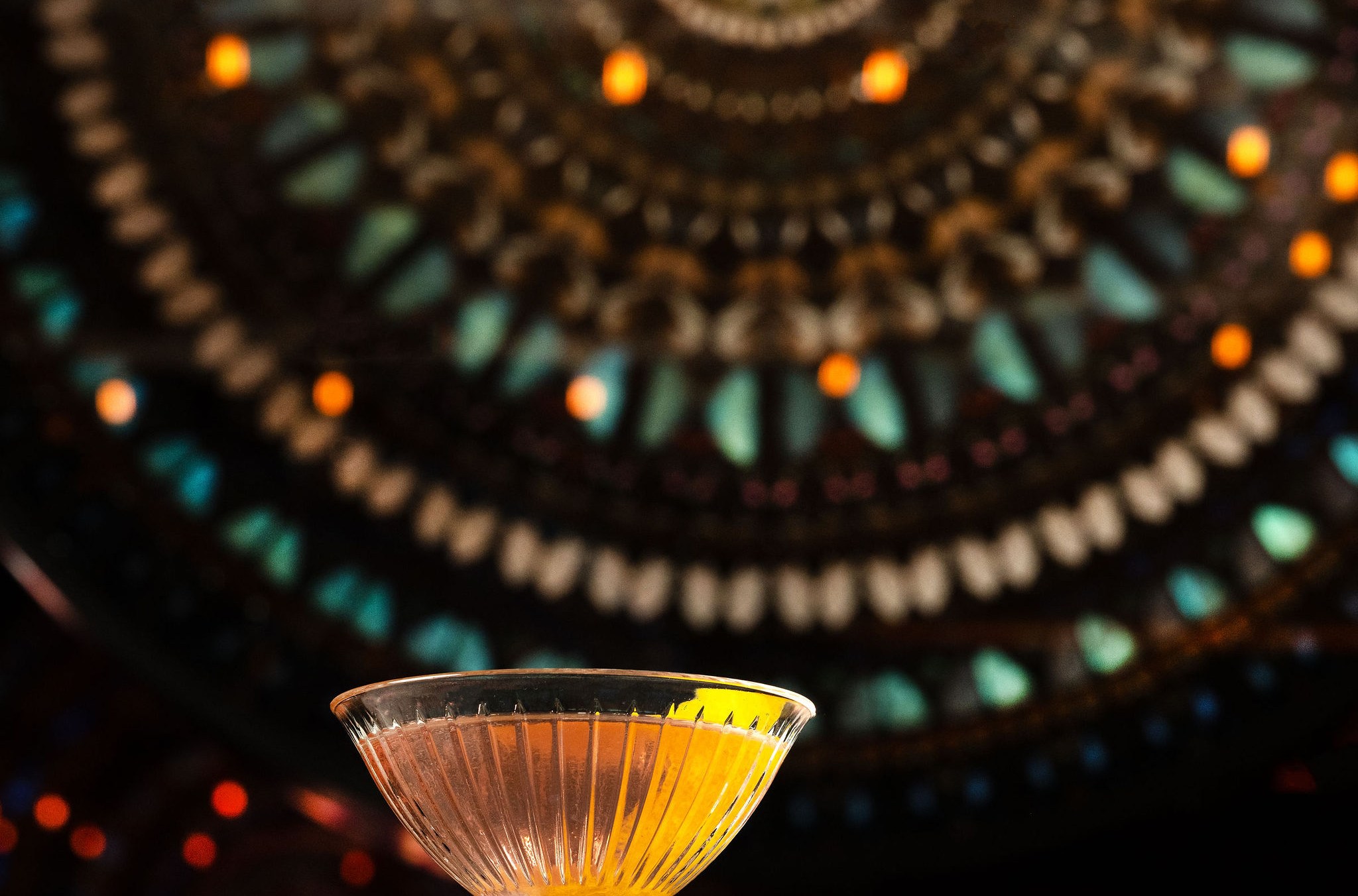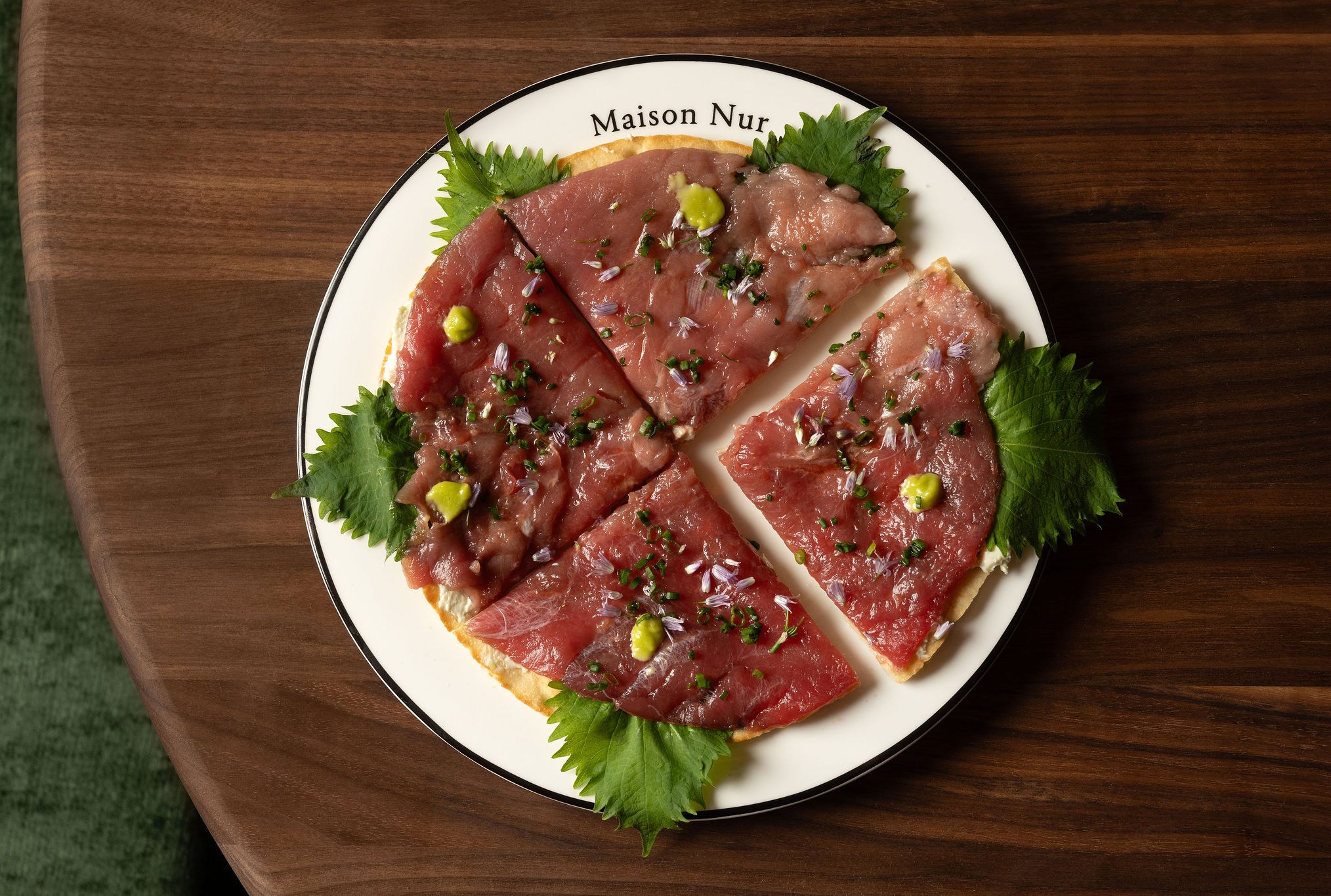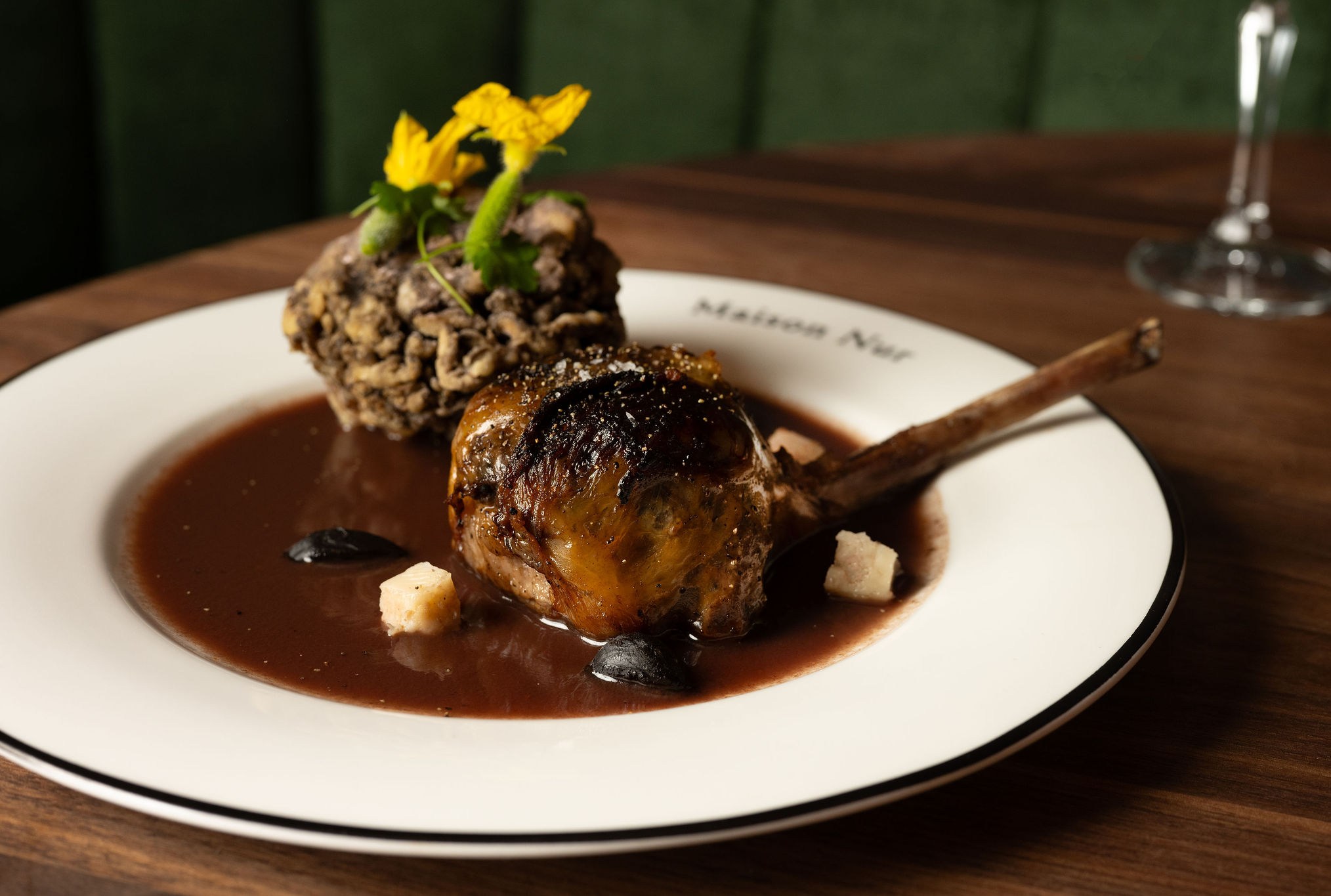Nur Khan has run nightclubs around New York, from Sway and Rose Bar to Tao Downtown and Butterfly Soho, for decades. A glance at Maison Nur, the new Lower East Side place that he opened in June (217 Bowery, at Rivington Street) had me expecting another classic clubstaurant — thumping music, mediocre and expensive food, scenesters getting bottle service — which is not my idea of a great time out.
Khan, however, insists that he’s going beyond club vibes to focus on cuisine first. “I put everything into this place,” he says. He brought in executive chef Richard Farnabe, a Paris native who had cooked at acclaimed New York restaurant kitchens, such as Daniel, Jean-Georges, Picholine, and Petrossian. When it came to the food, Farnabe explains, “The idea is to bring Upper East Side food to the Lower East Side.”
Khan cites Raoul’s, which he calls his favorite restaurant, as a key inspiration. Given his background and his lively personality — diners at Maison Nur are likely to see him hanging out at the bar, wearing a vest, tattoos showing, and a bottle of beer in hand — the restaurant can’t help but have at least a bit of a nightclub feel to it. And that’s before taking into account that, soon, there will be a lounge with a separate entrance, a custom sound system, and a setup for DJs and live music downstairs.
Does Maison Nur manage to be more than just a scene? Can it stand on its own as a restaurant? On a recent Friday evening, Eater stopped by to find out.
An entrance at Maison Nur. Liz Clayman/Maison Nu
The vibe: It’s obvious upon stepping through the plush curtains and into the restaurant that no expense has been spared here. The first things that catch your eye are two large mandalas, one behind the bar and one on the opposite wall, made out of real butterflies by Turner Prize-winning artist Damien Hirst. And yes, there’s a third one that decorates the downstairs lounge, all of them coming from Khan’s personal collection.
The mandalas are hardly the only flashy aesthetic touches. There’s a zebra-striped rug on the floor, which Khan designed; the curved copper ceiling evokes the top of a cave at a glitzy Napa Valley winery; urns full of flowers tower over green mohair banquettes (shout out to Gram Parsons); and the wallpaper in the stairwell and the restrooms looks as if it were peeled from the Bhagavad Gita.
Evidence that Maison Nur might be a typical clubstaurant: There was a couple two tables over making out as our server delivered our appetizers.
Added together, all of this does indicate a clubby vibe, but Maison Nur pulls the reins back on the party in subtle ways. For example, while the music is mostly house and electronic, played in hourlong playlists Khan curated from various DJs, the volume is adjusted perfectly — you don’t have to raise your voice, much less shout, to be heard across the dinner table.
A cocktail at Maison Nur. Liz Clayman/Maison Nu
The drinks: Unsurprisingly, given Khan’s years of running high-end clubs, Maison Nur’s cocktail program, designed by former U.K. bartender of the year and current Tales of the Cocktail Foundation executive director Charlotte Voisey, is excellent. We started our night with a round at the bar: My companion ordered a Coupe de Grace, a super-floral blend of Hendrick’s gin, soju, lychee, and elderflower; I had the cheekily named Pillow Talk, basically a cognac Manhattan accented with rosé vermouth that lent it lovely notes of vanilla. Both were delightful. After dinner, we each had a Smoke Show, a tequila and mezcal drink that’s smoked with a torch, evoking a Mexican temazcal treatment. (Khan calls that one his “baby,” and makes a point to put it on the menus at all of his places.)
The wine list isn’t expansive, but it’s interesting. The sommelier recommended a bottle of Schioppettino, a fairly obscure red grape from Friuli-Venezia, Italy, that was almost completely wiped out by phylloxera but was recultivated in the 1970s by Ronchi di Cialla. With dessert, he poured us a fantastic Sauternes from Chateau Suduirat. Yes, we had a lot of drinks, which could be indicative of the atmosphere here or of my own proclivities (or perhaps both).
The tuna tartare at Maison Nur. Liz Clayman/Maison Nu
The Colorado rack of lamb at Maison Nur. Liz Clayman/Maison Nu
The food: Chef Farnabe is creative with his French American plates, both in terms of composition and presentation. The tuna tartare appetizer is beautiful but okay — a dainty cylinder of vibrantly pink fish, raisins, sun-dried tomatoes, and pine nuts, topped with an ethereal mesh of rice cracker. The mushroom mille-feuille appetizer is equally creative, with layers of mushroom, foie gras, and artichoke, with dots of vodka gelee. The flavors, however, didn’t quite mesh; I would have been good with just the foie gras.
Both of our entrees, on the other hand, were superb. The madai (sea bream) was grilled to perfection, the white flesh was flaky and the skin on top crispy, and it was served in a bouillabaisse-inspired sauce that was punchy with saffron. The Colorado rack of lamb came with a pile of incredibly tender shredded lamb shoulder on top, with a bone marrow bordelaise sauce and a crispy maitake mushroom on the side, providing a textural counterpoint. Don’t skip dessert, especially the Paris Brest, a generous circle of pastry that tastes like beignets stuffed with popcorn-praline cream, topped with kernels of candied popcorn. The Sauternes pairing really, ahem, popped with that.
The takeaway: Even in a city with high-end restaurants as flashy as New York’s, Maison Nur stands out for its opulent design. The outstanding bar program will keep the party-hearty crowd pleased, and the dinner menu, while it has the occasional miss, offers plenty of creatively realized winners — in particular, the meat entrees, the desserts, and anything with caviar on it — for more discerning palates. I don’t know that I’ll be bringing my septuagenarian parents here next time they come to town, but, for the most part, when it comes to finding the balance between scene-y and refined, Nur Khan and his team are hitting the mark.
